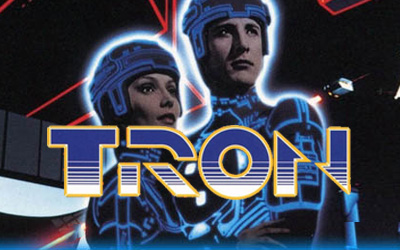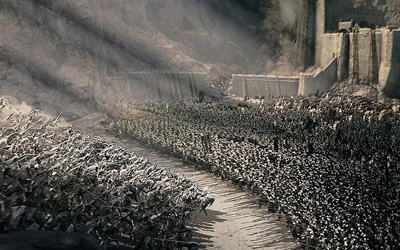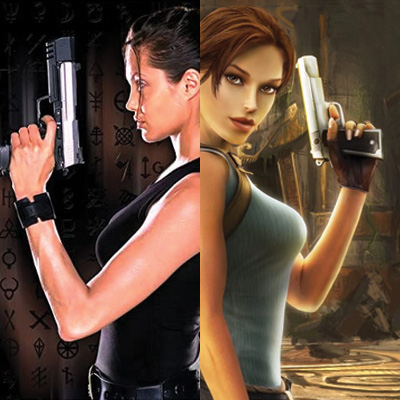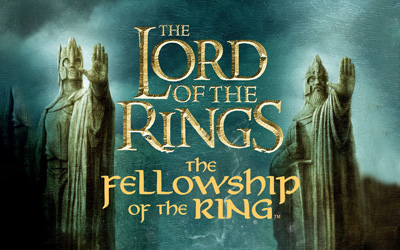
Video Game Movies: The Best Movies Based On Video Games
By  O.B. Wonkeynobuy | Time To Read:10 mins
O.B. Wonkeynobuy | Time To Read:10 mins


1. Introduction
When we wonder about the influence between cinema and video games, we naturally think that cinema was the first to inspire the other, relegating the video game to a simple derivative product intended to extend the film’s concept.
Examples abound throughout time, notably with the many adaptations of Marvel and superhero films into video games (Spider-Man, Batman, etc.) or even series such as Star Wars and The Lord of the Rings.
But what about these interactions? Is there a big difference between film and video games? Do movies and video games complement each other, or are they competing with one another? What are the best movies based on video games and the best video games movies? Where to watch them now?

2. History of inspiration between video games and movies
“ The video game is a neon-lit daydream, whereas the cinema is the projection of that dream.”
Jérôme Dittmar
- From darkness to the Lumières
Often attributed to the Lumière brothers, the invention of cinema was the result of research and advances all over the world, culminating in the first film recorded by a camera created by Thomas Edison in 1891.
It was not until almost a century later that video games emerged. During that time, the art had time to grow from simplistic, voiceless scenarios to Machiavellian shenanigans and extreme action-packed and visually stunning shows with award-winning actors who are now idols to millions.
The world of video games has jumped on the bandwagon of this evolution, with some going so far as to call it the 10th art.

- King Pong the 1st ohm
William A. Higinbotham’s oscilloscope (Tennis for Two) in 1958 is considered to be the origin of the video game, long before Pong found its way into our homes in 1972.
Unfortunately, the power of computers and consoles at the time did not allow us to conceive anything other than joyful clusters of moving pixels.
Still, the progress was extraordinary, and the big machine grew in popularity.
- Cinema as a starting point?
As early as 1982, Steven Lisberger, with the cult film Tron, broke new ground by plunging his main character Kevin Flynn, a video game programmer, into the virtual world of computers and artificial intelligence.
There, the foundations were laid.

The following year, John Badham‘s WarGames featured a high school student passionate about video games who inadvertently hacks into the NORAD (North American Aerospace Defense Command) computer system instead of a video game company and sets the stage for a global nuclear war.
These two examples show that cinema was quickly becoming inspired by video games and the extraordinary potential of virtual reality, whereas the opposite would only happen much later.
- Reality as a limiting factor
In search of the spectacular and sensational to attract the public to screens, cinema has always pushed the boundaries of reality.
In particular, for obvious reasons of preserving the physical integrity of actors and stunt performers, notwithstanding Jackie Chan, Jean-Paul Belmondo, and more recently, Tony Jaa, you can’t ask them to risk their lives for the sake of a film.

The production budget is also becoming a concern, with the number of extras needed for epic battles, increasingly expensive sets, and all the staff involved in creating, setting up, and maintaining them.
- The virtual to the rescue of the real
The development of computer processing power allowed considerable progress in the cinematographic world, with the emergence of 3D animation and computer-generated images that revolutionized science fiction, heroic fantasy, and horror films.
Some producers even went so far as to create their own special effects studios, such as George Lucas with Industrial Light & Magic (ILM) in 1975 and Peter Jackson with Weta Digital in 1993.

Special effects have become a prominent part of every film and have opened doors only limited by imagination.
- And video games in all this?
After the release of Space Invaders in 1978 and Pac-Man 2 years later, arcades appeared worldwide and introduced video games to the general public.

The visuals in games have improved considerably due to the progress made in computers and with the giant leaps that came with the CD-ROM and consoles such as the Super Nintendo in 1992, the PlayStation in 1994, and the Xbox in 2001.
- The new heroes
These three behemoths of the video game world, Sony, Microsoft, and Nintendo, sold several million copies of their consoles while developing exclusive game licenses, with characters that became cult favorites such as Lara Croft in Tomb Raider, Spartan 117 in Halo, and Nintendo’s Mario.

Like in movies, video games evolve under the impulse of this search for humanity and the carnal desire to incarnate the hero.
They invented a history, a triggering event, a quest, and distinctive personalities.
Video game culture is on the move, gradually emancipating itself from its distant cousin by creating its own codes, language, and heroes and giving birth to a new community: gamers.
If for the new heroes, the royal road between cinema and video games seemed rather one-way, by which I mean it reserved for blockbusters, the trend would gradually become more balanced in the early 2000s.
The video game industry now reaches an excessive turnover (we’re talking about more than 70 billion dollars), a figure higher than that of the film industry.
Naturally, the latter will turn more and more to video games for its films, no longer as a marketing medium but as a source of inspiration to attract a new audience.
Film adaptations were to multiply, in particular thanks to the resounding success of Tomb Raider and Resident Evil, whose first opus on PlayStation had used the mechanics of cinema very well by creating an intro video with real characters worthy of a film trailer.
The circle is complete: gamers can put a face on their favorite video game characters, and moviegoers can finally embody their sometimes clumsy and facetious heroes and succeed in their quest much better than they ever did.
- The law of series
Television consumption has increased with the emergence of film channels (HBO, OCS, etc.) and video-on-demand (VOD) platforms such as Just Watch, Netflix, Amazon Prime Video, and Disney+.
The global Covid 19 pandemic and the repeated confinements further accentuated this phenomenon.
In addition to offering successful films that have already been released, streaming platforms will actively finance series and TV films to ensure their exclusivity.
This is the case for the Cyberpunk: Edgerunner series on Netflix. Inspired by Cyberpunk 2077, it now breathes new life into the game by attracting a wider audience.
Indeed, after a somewhat tricky launch, the game has sold more than 20 million copies worldwide by December 2022.

A new bridge, this time between the small screen and video games, is being built.
3. How video games inspired the cinema
We have seen that cinema has quickly taken over the virtual universe of the videogame sphere and has done so in different ways.
We can thus distinguish 4 main currents of inspiration:
- Conceptual inspiration
Here we use the codes of video games, the idea of virtual reality as in Ready Player One, where in a society that has become chaotic, the world population takes refuge in a planetary MMORPG to escape a sad reality.

- Subjective inspiration
The hero is the source of inspiration, whether from a film or a game.
We have already mentioned Lara Croft, the heroine of the game Tomb Raider, released in 1996, and who Angelina Jolie played in Lara Croft: Tomb Raider and Lara Croft: Tomb Raider – The Cradle of Life 2003.
The hero, or heroine, is transported into new adventures but keeps all the complexity of the character.

- Objective inspiration
We can also talk about situational inspiration, where we simply use a physical and psychological environment specific to the source of inspiration and make characters evolve in it without having already taken part in existing stories.
For example, we can cite the film Halo 4: Forward Unto Dawn, an adaptation of the famous video game Halo released on the XBOX console, which uses the material of the game without reliving one of its adventures in a strict sense.

- Film or video adaptation
As its name indicates, this inspiration is almost total by taking over the characters, the environment, and the adventure itself.
The players or audience relive the entire adventure, as in The Lord of the Rings: The Fellowship of the Ring, which keeps the same name as the film and book.

4. The best movies adapted from video games
Here’s a list of the best movies inspired by video games to rent or buy and the video-on-demand platforms where you can watch them.
Uncharted 2022
 |
|
Where to watch Uncharted 2022 in Streaming and VOD:
Lara Croft: Tomb Raider
 |
|
Where to watch Lara Croft: Tomb Raider in Streaming and VOD:
Warcraft The Beginning
 |
|
Where to watch Warcraft The Beginning in Streaming and VOD:
Hitman
 |
|
Where to watch Hitman in Streaming and VOD:
Resident Evil: Welcome to Racoon City
 |
|
Where to watch Resident Evil: Welcome to Racoon City in Streaming and VOD:
Free Guy
 |
|
Where to watch Free Guy in Streaming and VOD:
Ready Player One
 |
|
Where to watch Ready Player One in Streaming and VOD:
Assassin’s Creed
 |
|
Where to watch Assassin’s Creed in Streaming and VOD:
Max Payne
 |
|
Where to watch Max Payne in Streaming and VOD:
Doom Annihilation
 |
|
Where to watch Doom Annihilation in Streaming and VOD:
Prince of Persia The Sands of Time
 |
|
Where to watch Prince of Persia: The Sands of Time in Streaming and VOD:
5. The best video games inspired by movies
Find the 10 best video games that were inspired by movies thanks to cult films at a discounted price.
6. The best TV series about video games
Here are the best TV series inspired by video games or about video games that are currently available on VOD movie channels
Cyberpunk Edgerunners
 |
|
Where to watch Cyberpunk Edgerunners in Streaming and VOD:
The Walking Dead
 |
|
Where to watch The Walking Dead in Streaming and VOD:
The Witcher
 |
|
Where to watch The Witcher in Streaming and VOD:
The Witcher Blood Origin
 |
|
Where to watch The Witcher Blood Origin in Streaming and VOD:
Arcane 2021 (Netflix)
 |
|
Where to watch Arcane 2021 in Streaming and VOD:
Halo
 |
|
Where to watch Halo in Streaming and VOD:
High Score
 |
|
Where to watch High Score in Streaming and VOD:
Not a Game
 |
|
Where to watch Not a Game in Streaming and VOD:
Tom Clancy’s Jack Ryan
 |
|
Where to watch Tom Clancy’s Jack Ryan in Streaming and VOD:
Costume Quest
 |
|
Where to watch Costume Quest in Streaming and VOD:
Future Man
 |
|
Where to watch Future Man in Streaming and VOD:
7. The best upcoming TV series inspired by video games
Here is the list of the most anticipated new TV series inspired by video games this year:
The Last of Us
 |
|
Where to watch The Last of US in Streaming and VOD:
Splinter Cell
 |
|
Where to watch Splinter Cell in Streaming and VOD
Tomb Raider (2023)
 |
|
Where to watch Tomb Raider in Streaming and VOD
Assassin’s Creed
 |
|
Where to watch Assassin’s Creed in Streaming and VOD
Fallout
 |
|
Where to watch Fallout in Streaming and VOD
Life is Strange
 |
|
Where to watch Life is Strange in Streaming and VOD
Disco Elysium
 |
|
Where to watch Disco Elysium in Streaming and VOD
God of War
 |
|
Where to watch God of War in Streaming and VOD
8. Conclusion:
Film and video games belong to the same visual recreational universe, and both seek a faithful retranscription of reality.
The difference is that cinema starts from the living spectacle to create the image.
In contrast, the video game starts from the pixelated image to create the living, with the ultimate goal of achieving an ever more immersive reality.
The 7th art uses mainly recorded images with a linear scenario from which one cannot escape, offering a similar experience and emotion, at each viewing, to each spectator, all passive.
In contrast, the video game will offer the player an individual incarnation of the hero based on their own abilities to master a game system in an environment to be explored, which makes the experience unique for each player.
Both have followed the same evolution, at the rhythm of technical and technological advances, lending each other the same mechanics, one using film actors for motion capture (digitization of a character’s gestures), performance capture (digitization of facial expressions), and the use of cinematics.
The other draws on computer-generated images and 3D technology to push back the limits of reality by creating a new cinematographic genre.
Each has its own nod to the other’s universe, and if the number of planned film, television, and video game adaptations is anything to go by, the symbiosis has a bright future ahead.









If you liked watching John Krasinski, Tom Clancy’s CIA agent Jack Ryan, and are looking forward to seeing Henry Cavill in Winston Churchill’s Ministry for Ungentlemanly Warfare, read about a real ungentlemanly spy on the run. His name is Bill Fairclough (MI6 Codename JJ) aka Edward Burlington. In real life Bill Fairclough was recruited by Colonel Alan Pemberton CVO MBE (MI6). Pemberton’s People in MI6 were genuine ungentlemanly heroes and even included self-confessed silent killers and Churchill’s bodyguard. For more about them do see the News Article dated 31 October 2022 in TheBurlingtonFiles website. It’s called Pemberton’s People, Ungentlemanly Officers & Rogue Heroes. By the way, Bill Fairclough is the protagonist in the factual stand-alone spy thriller Beyond Enkription, the first novel to be published in TheBurlingtonFiles series.